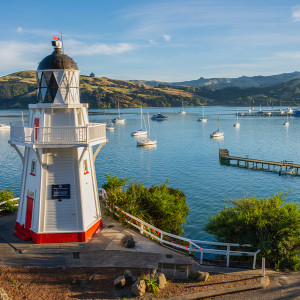The landscape values of Canterbury/Waitaha
 Waitaha is one of the largest and most diverse regions in New Zealand/Aotearoa.
Waitaha is one of the largest and most diverse regions in New Zealand/Aotearoa.
The Waitaha landscape varies significantly, including:
- the rugged main divide ranges with their intermontane basins
- downlands and foothills
- the expansive Canterbury/Waitaha plains created by river shingle deposition from braided river systems
- the volcanic features of Banks Peninsula/Horomaka
- remnant limestone formations from marine deposits
- low lying coastal areas and long beaches.
Many of these areas have been through significant change over the period of human settlement in Waitaha.
In 2010, we commissioned a report that identified areas of outstanding natural features and landscapes (ONFLs) throughout the Waitaha region. Because this report does not distinguish between Outstanding Natural Features (ONFs) and Outstanding Natural Landscapes (ONLs), some of the ONLs contain ONFs.
The region’s Outstanding Natural Features
 Waitaha has a number of outstanding natural features. The scale of these varies and examples include:
Waitaha has a number of outstanding natural features. The scale of these varies and examples include:
- Braided rivers - internationally very rare geomorphological features and ecologically unique
- Tasman Glacier
- Limestone Outcrops at Castle Hill/Kura Tawhiti and Weka Pass
- Volcanic Outcrops near Mt Somers
- Kaitorete Spit and Te Waihora/Lake Ellesmere .
Historic and cultural heritage
In addition to the biophysical components of landscape values, our historic and cultural heritage reflects the identity and history of communities in Waitaha.
These areas have been built over time and reflect the settlements, sites and landscapes that have developed through patterns of human use.
For Ngāi Tahu, this includes urupā, nohoanga, mahinga kai, ingoa wāhi, ara tawhito and other wāhi taonga, as well as maunga, roto, awa and other significant landscapes

Rāpaki marae

Tuhituhi o neherā - Māori rock art

Ōnuku Church, Akaroa
Post-European settlement sites
Post-European settlement heritage sites include places of worship and cemeteries, sites of major events, as well as buildings, trees and items associated with early farming practices.

Christchurch Cathedral

Fyffe house, Kaikōura

St Augustine's Church in Waimate
 The region's natural character
The region's natural character
The natural character of Waitaha is interconnected within the ki uta ki tai framework - the passage of water from the mountains to the sea.
Braided rivers are a key feature of the region's natural character, as are the alpine lakes and the coastal environment including lagoons and estuaries.
The intactness and health of the biodiversity associated with these environments are important components in determining their naturalness, as is their ability to maintain their natural processes and patterns.
Examples of this include a braided river's ability to move across its floodplain and the need for flushing flows to occur in rivers.
Current management approach
The preservation of natural character and the protection of ONFLs and historic heritage, are matters of national importance in section 6 of the Resource Management Act (RMA). The New Zealand Coastal Policy Statement (NZCPS) also requires councils to protect natural features and landscapes (including seascapes) and to preserve natural character in the coastal environment, including the coastal marine area.
The Canterbury Regional Policy Statement (CRPS) identifies and sets out the values for ONFLs at a regional scale in its Appendix 4. Natural features and landscapes can be seen as outstanding at the regional scale or the district scale. Twenty-six ONFLs are identified across the region.
The CRPS sets out objectives and policies for the protection of ONFLs and significant historic and cultural heritage items, places and areas. It also promotes the identification and management of other important landscapes that are not ONFLs, for natural character, historic cultural, historic heritage and amenity purposes.
The CRPS also requires the preservation, maintenance and improvement of natural character in both freshwater and coastal environments.
Regional plans include objectives, policies and methods to protect natural character values and ONFLs. District plans set out objectives, policies and methods to protect ONFLs and historic and cultural heritage within their districts, as well as including maps to identify ONFLs within their plans.

